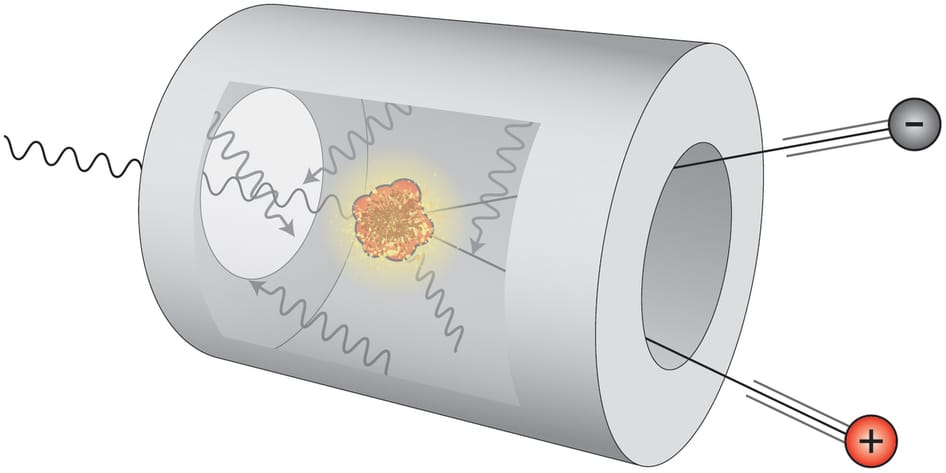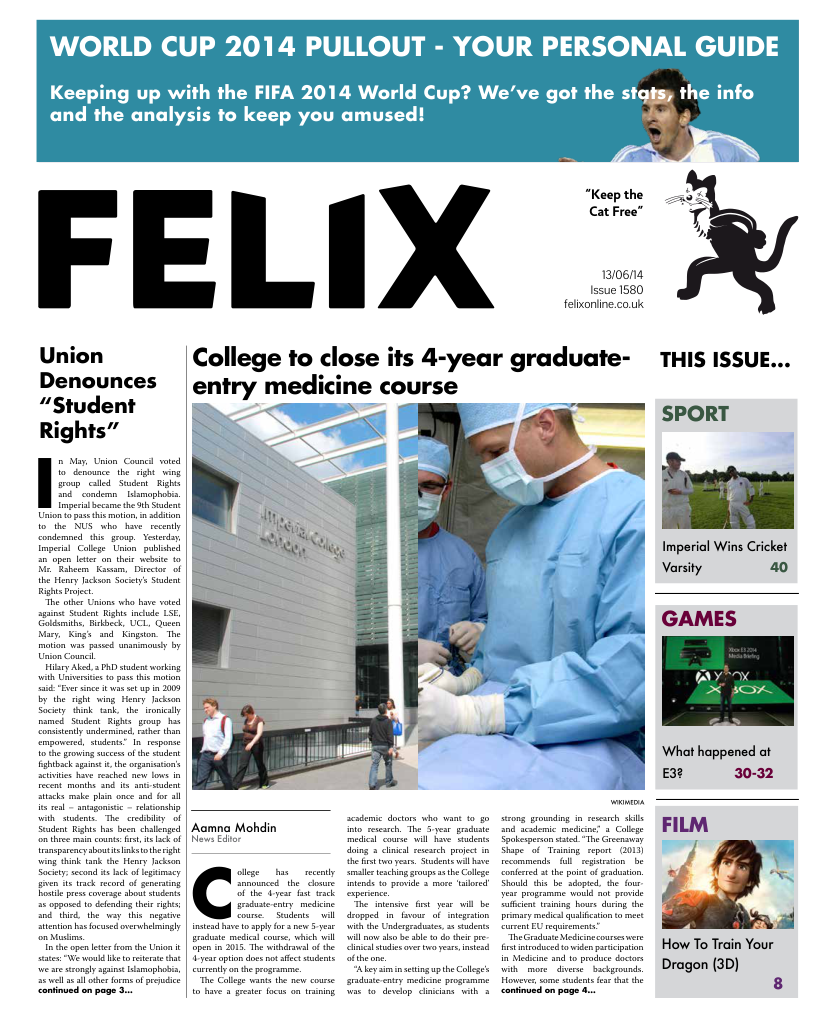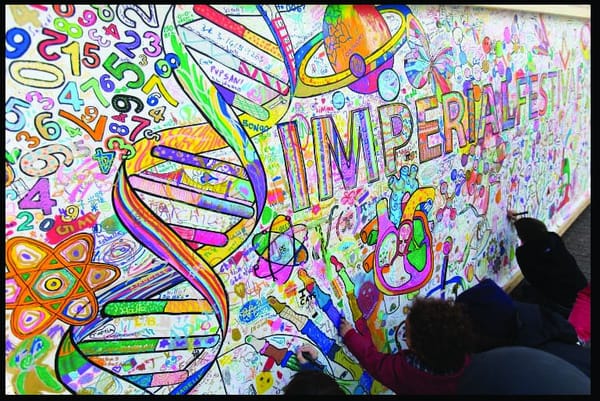Making light of the matter
Philippa Skett talks to the researchers behind turning light into electrons

Last month, Imperial attracted the attention of the world’s media once again, with researchers based in Blackett Laboratory showing how to potentially create matter from light. Their paper, published in Nature Photonics, builds upon The Breit and Wheeler’s theory, made in 1934, and solves an 80 year old challenge that previously left physicists stumped.
The theory states that photons, the fundamental elements that make up light, can transform into electrons and positrons, elements of matter. This potential interchange between light and matter has never been demonstrated; it was previously thought too difficult to force photons to collide in such a way to produce electrons and positrons.
However, it seems that the solution was actually under the noses of scientists all along. Lead researcher, Oliver Pike, is currently a PhD student, and was the first to coin the idea. After completing a degree in Natural Sciences at Cambridge, he joined Imperial in 2011, to pursue his doctorate in high energy density physics.
Inertial confinement fusion (ICF) energy research, a particular branch of research that studies some of the processes behind at nuclear power, provided the inspiration for Pike’s discovery: “We were looking into whether the facilities used in ICF could be used to study fundamental physics, initially on scrap paper using simple order of magnitude estimates.
Within a few hours it was clear they could provide the perfect conditions for creating a photon collider. Our photon collider could create electrons (and their antiparticle, positrons) from light with today's lasers.”
With ICF equipment already using powerful lasers to heat and compress pellets to induce nuclear reactions, Pike’s idea was to remove the pellets and direct the lasers to collide together instead.
However, it could take some time to produce tangible results. Pike told us, “Predicting exactly when the experiment will take place is very difficult.
There's no guarantee that it will be done within the next year, but we are hopeful the Breit-Wheeler process will be observed very soon.”
Felix spoke to Professor Roland Smith, Head of Plasma Physics at Imperial about the new research, and what it was like to be in the eye of the media storm surrounding the story:
“It’s always a pleasure to see how smart some of your colleagues are and to have this recognised with high profile publications and (a brief) place in the spotlight.”
“High profile results of this kind are collected by Heads of Department and College monthly. This paper was reported on the BBC news online website, The Guardian, The Daily Mail, The Telegraph, the LA Times and the Times of India, the world's largest circulation English-language broadsheet. The story featured on the front page of The Guardian’s website (where it was one of their top 10 most popular stories) and the BBC News website.
[This subject] is a double edged sword however – it's an exciting idea with a strong popular cultural resonance. The paper describes a process that can be summarised as “light in, matter out,” (true – under extreme conditions) but some people will automatically assume this leads to a Star Trek “Holodeck” – which is very false!”
On that idea that this technology may soon be used to create large amounts of matter from light, Pike said, “There currently isn't enough energy to make heavier particles. Even if this were possible, these would be created in such low numbers and at such high energies that they would not be an 'object'. Most likely some kind of electron-positron plasma (like that in the early universe) would be formed.”
Professor Smith continued, “Can we follow this up with a real experiment? Not on site at Imperial I am afraid, there are only one or two labs in the world with the right capabilities at the moment. It would take a minimum of a £200 million laser system and a decade of work starting from scratch so I don't think we will be doing this on site in South Kensington.”
“I am sure however that members of our group will be busy writing grant proposals and bidding for time on existing "big" lasers to see if this idea can now be tested – so I am sure it will be one of quite a few exciting ideas we want to work on in the future.”









